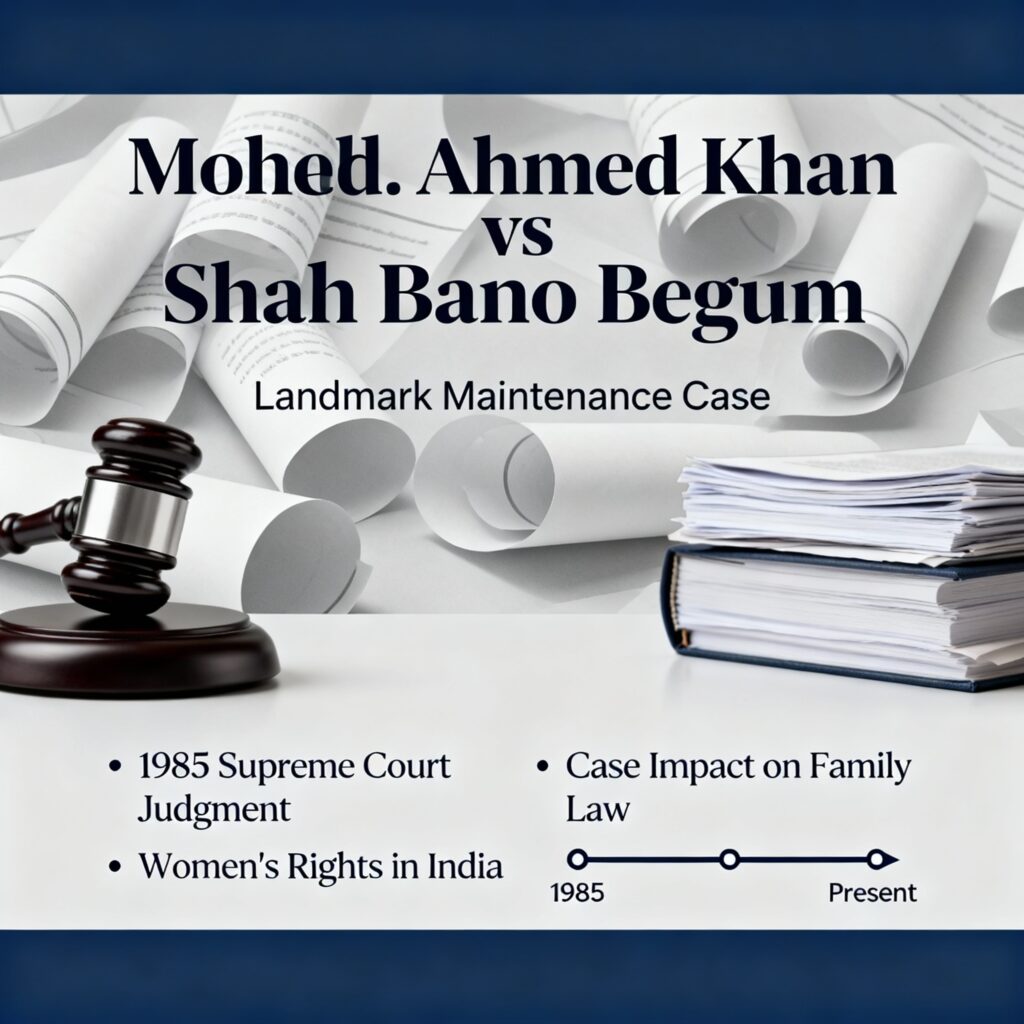Published On: September 28th 2025
Authored By: Ankit N.K. Saxena
Nari Gursahani Law College, Mumbai
Abstract
Climate change represents one of the most pressing challenges of the 21st century, requiring comprehensive legal and policy responses at both international and national levels. This article examines the evolution of climate change legislation and policy frameworks, analyzing India’s domestic legal architecture alongside global governance mechanisms. Through examination of statutory provisions, policy initiatives, and judicial precedents, this study evaluates the effectiveness of current legal responses to climate change and identifies areas requiring strengthened legal intervention.
Introduction
Climate change law encompasses legislative acts, executive decrees, and policy frameworks developed by governments to address anthropogenic climate change and its impacts. This emerging field of law represents the intersection of environmental law, international law, and public policy, reflecting the urgent need for legal responses to one of humanity’s greatest collective challenges.
The legal response to climate change has evolved from early environmental protection statutes to specialized climate legislation addressing mitigation, adaptation, and resilience. This evolution reflects growing scientific understanding of climate risks and the recognition that traditional environmental laws, while important, are insufficient to address the scale and complexity of climate change.
The Imperative for Climate Action
The scientific consensus on anthropogenic climate change has established clear imperatives for legal and policy intervention:
Rising Global Temperatures: Earth’s average temperature has increased significantly since pre-industrial times, with the last decade recording the highest temperatures in recorded history. This warming trend demands immediate legal responses to limit greenhouse gas emissions.
Anthropogenic Drivers: Human activities, particularly the combustion of fossil fuels including coal, oil, and natural gas, constitute the primary drivers of contemporary climate change. Legal frameworks must therefore address energy systems, industrial processes, and land use patterns.
Cascading Environmental Impacts: Climate change manifests through multiple environmental disruptions including increased frequency and intensity of extreme weather events, rising sea levels, ecosystem disruption, and agricultural stress. Legal systems must anticipate and address these interconnected impacts.
Socioeconomic Consequences: Climate change disproportionately affects vulnerable populations, creating legal imperatives around environmental justice, human rights, and equitable adaptation measures.
Ecosystem Disruption: Habitat loss, species migration, and biodiversity reduction require legal frameworks that integrate climate concerns with conservation law.
India’s Climate Change Legal Framework
India’s approach to climate change law builds upon existing environmental legislation while developing new mechanisms for climate-specific challenges.
Constitutional Foundation
Article 21 – Right to Life and Personal Liberty: Indian courts have interpreted this fundamental right to include the right to a clean and healthy environment, establishing constitutional grounds for climate action.
Article 48A – Environmental Protection: This directive principle mandates state action to protect and improve the environment and safeguard forests and wildlife.
Article 51A(g) – Fundamental Duty: Citizens have a constitutional duty to protect and improve the natural environment.
Statutory Framework
Environment Protection Act, 1986: This umbrella legislation provides the Central and State governments with comprehensive powers to protect environmental quality and prevent pollution. The Act serves as the legal foundation for climate-related regulations and notifications.
Air (Prevention and Control of Pollution) Act, 1981: This statute regulates air pollution through emission standards and control measures. State pollution control boards monitor and enforce compliance with emission norms for industries and vehicles.
National Green Tribunal Act, 2010: Establishing specialized environmental courts, this Act ensures expedited resolution of environmental disputes, including climate-related cases. The Tribunal has jurisdiction over cases involving substantial environmental questions.
Energy Conservation Act, 2001: This legislation provides the legal framework for energy efficiency measures, establishing the Bureau of Energy Efficiency and mandating energy conservation in designated industries and buildings.
Forest (Conservation) Act, 1980: This Act protects India’s forest resources by restricting the diversion of forest land for non-forest purposes. Post-enactment, all forests became government property, with the Act requiring compensatory afforestation for any diverted forest land.
Water (Prevention and Control of Pollution) Act, 1974: This statute addresses water pollution from industrial, agricultural, and domestic sources while regulating water consumption through cess mechanisms.
Wildlife Protection Act, 1972: This comprehensive legislation protects India’s wildlife through three primary objectives: establishing uniform wildlife protection standards, creating protected area networks, and regulating wildlife trade.
Biological Diversity Act, 2002: This Act implements India’s commitments under the Convention on Biological Diversity, providing frameworks for biodiversity conservation, sustainable use, and equitable benefit-sharing.
International Climate Law Framework
United Nations Framework Convention on Climate Change and Paris Agreement
The UNFCCC, established in 1992, provides the foundational international legal framework for climate action. The Paris Agreement, adopted in 2015 and entering into force in 2016, represents the current cornerstone of international climate law.
The Paris Agreement establishes several key legal mechanisms:
Temperature Goals: The Agreement aims to limit global average temperature increase to well below 2°C above pre-industrial levels while pursuing efforts to limit increases to 1.5°C.
Nationally Determined Contributions (NDCs): All parties must submit and regularly update NDCs reflecting their national climate action plans, with provisions for enhanced ambition over time.
Adaptation Framework: The Agreement establishes a global goal on adaptation, requiring countries to engage in adaptation planning processes and submit adaptation communications.
Climate Finance: Developed countries must provide financial support to developing countries, with a commitment to mobilize $100 billion annually by 2020.
Technology Transfer: The Agreement establishes a technology framework to promote technology development and transfer to support climate action.
Kyoto Protocol
As the first legally binding international climate agreement, the Kyoto Protocol established the principle of “common but differentiated responsibilities,” requiring developed countries to take the lead in reducing greenhouse gas emissions through legally binding targets.
Montreal Protocol
While primarily addressing ozone depletion, the Montreal Protocol has significant climate co-benefits through the phasedown of hydrofluorocarbons (HFCs) under the 2016 Kigali Amendment, preventing substantial greenhouse gas emissions.
India’s National Climate Policy Framework
National Action Plan on Climate Change (NAPCC)
Launched in 2008, the NAPCC outlines India’s comprehensive approach to climate change through eight national missions:
National Solar Mission: Promoting solar energy deployment to achieve 100 GW of solar capacity by 2022.
National Mission for Enhanced Energy Efficiency: Improving energy efficiency across sectors through innovative financing mechanisms and regulatory frameworks.
National Mission on Sustainable Habitat: Promoting sustainable urban development and green building practices.
National Water Mission: Ensuring water security through conservation, efficiency, and integrated water resource management.
National Mission for Sustaining the Himalayan Ecosystem: Protecting the Himalayan ecosystem through conservation and sustainable development measures.
National Mission on Strategic Knowledge for Climate Change: Building institutional capacity for climate research and policy development.
Green India Mission: Enhancing forest cover and ecosystem services through afforestation and forest conservation.
National Mission for Sustainable Agriculture: Promoting climate-resilient agricultural practices and technologies.
Quantified Climate Commitments
India’s NDC under the Paris Agreement includes specific quantified targets:
- Reducing emissions intensity of GDP by 45% by 2030 (from 2005 levels)
- Achieving 50% of installed electricity capacity from non-fossil fuel sources by 2030
- Creating an additional carbon sink of 2.5-3 billion tonnes of CO₂ equivalent through enhanced forest and tree cover
Institutional Framework
Ministry of Environment, Forest and Climate Change (MoEFCC): The primary ministry responsible for environmental and climate policy implementation.
Central and State Pollution Control Boards: Regulatory bodies responsible for monitoring and enforcing pollution control measures.
National Biodiversity Authority: Regulating access to biological resources and associated traditional knowledge.
Coastal Zone Management Authority: Managing coastal ecosystem protection and sustainable development.
Judicial Response to Climate Change
Indian courts have played a significant role in developing climate jurisprudence through constitutional interpretation and environmental law enforcement.
Landmark Cases
Vellore Citizens Welfare Forum v. Union of India (1996) Citation: [1996] 5 SCC 647
Facts: An NGO filed a public interest litigation highlighting severe water pollution caused by untreated effluents from tanneries in Tamil Nadu, which were being discharged into agricultural land and the Palar River.
Judgment: The Supreme Court recognised the severity of environmental pollution and ordered immediate remedial action. The Court imposed daily fines of ₹10,000 on non-compliant industries, directed the closure of unapproved tanneries, and established the principle that polluters must bear the cost of environmental restoration.
Legal Significance: This case established the “polluter pays” principle in Indian environmental law and recognised the constitutional right to a clean environment under Article 21.
Rural Litigation and Entitlement Kendra v. State of Uttar Pradesh (1987) Citation: [1987] AIR 359
Facts: Environmental activists challenged limestone quarrying operations in the Doon Valley that were causing extensive ecological damage to the fragile Himalayan ecosystem.
Judgment: The Supreme Court ordered the closure of quarries causing significant environmental harm and mandated strict regulatory compliance for remaining operations. The Court emphasised the need to balance development with environmental protection.
Legal Significance: This case established judicial recognition of sustainable development principles and the precautionary approach to environmental protection.
M.C. Mehta v. Union of India (Oleum Gas Leak Case) Citation: AIR 1987 SC 965
Facts: This case arose from a hazardous gas leak at a chemical plant, highlighting the risks associated with industrial operations involving dangerous substances.
Judgment: The Supreme Court evolved the “absolute liability” principle, making enterprises engaged in hazardous activities liable for harm caused regardless of fault or reasonable care.
Legal Significance: This judgment strengthened environmental liability standards and established strict accountability for industrial environmental risks.
Implementation Challenges and Legal Gaps
Despite comprehensive legal frameworks, several challenges impede effective climate action:
Enforcement Deficits: Weak implementation of existing environmental laws undermines climate objectives, requiring strengthened regulatory capacity and accountability mechanisms.
Jurisdictional Complexity: Climate change impacts cross multiple legal and administrative jurisdictions, necessitating improved coordination mechanisms.
Legal Certainty: The absence of comprehensive climate-specific legislation creates uncertainty for investors and policymakers, highlighting the need for dedicated climate laws.
Rights-Based Approaches: Current legal frameworks insufficiently integrate human rights perspectives into climate governance, particularly regarding climate justice and vulnerable populations.
Recommendations for Legal Reform
Comprehensive Climate Legislation: India should enact comprehensive climate change legislation that consolidates existing legal provisions while establishing new mechanisms for mitigation, adaptation, and climate resilience.
Institutional Strengthening: Enhanced capacity for climate law implementation requires strengthened institutions, improved coordination mechanisms, and adequate financial resources.
Rights-Based Framework: Climate legislation should explicitly recognize climate rights, environmental justice principles, and the particular needs of vulnerable populations.
Enhanced Enforcement: Stronger penalties, improved monitoring systems, and judicial specialization in climate cases can improve legal enforcement.
Participatory Governance: Legal frameworks should ensure meaningful public participation in climate decision-making, including access to information and judicial remedies.
Conclusion
India’s approach to climate change law represents an evolving synthesis of constitutional principles, environmental statutes, policy initiatives, and judicial precedents. While existing legal frameworks provide important foundations for climate action, the scale and urgency of climate challenges require more comprehensive and coordinated legal responses.
The development of India’s climate jurisprudence reflects growing recognition of climate change as both an environmental and constitutional issue. The Supreme Court’s interpretation of Article 21 to include climate rights marks a significant evolution in environmental constitutionalism.
However, translating legal commitments into effective climate action requires addressing implementation gaps, strengthening institutional capacity, and developing more integrated approaches to climate governance. The future effectiveness of India’s climate law will depend on its ability to evolve beyond sectoral approaches toward comprehensive, rights-based, and scientifically grounded legal frameworks.
As India continues to balance development imperatives with climate commitments, the law must serve as both a framework for action and a mechanism for accountability. The development of robust climate legislation, supported by effective implementation and judicial oversight, will be crucial for achieving India’s climate goals while contributing to global climate governance.
References
- United Nations Framework Convention on Climate Change, opened for signature 9 May 1992, 1771 UNTS 107 (entered into force 21 March 1994)
- Paris Agreement, opened for signature 22 April 2016, UNTS I-54113 (entered into force 4 November 2016)
- Government of India, National Action Plan on Climate Change (2008)
- Vellore Citizens Welfare Forum v. Union of India, [1996] 5 SCC 647
- Rural Litigation and Entitlement Kendra v. State of Uttar Pradesh, [1987] AIR 359
- M.C. Mehta v. Union of India, AIR 1987 SC 965
- Environment Protection Act, 1986 (India)
- National Green Tribunal Act, 2010 (India)
- Energy Conservation Act, 2001 (India)
- Ministry of Environment, Forest and Climate Change, India’s Updated Nationally Determined Contribution (2022)




